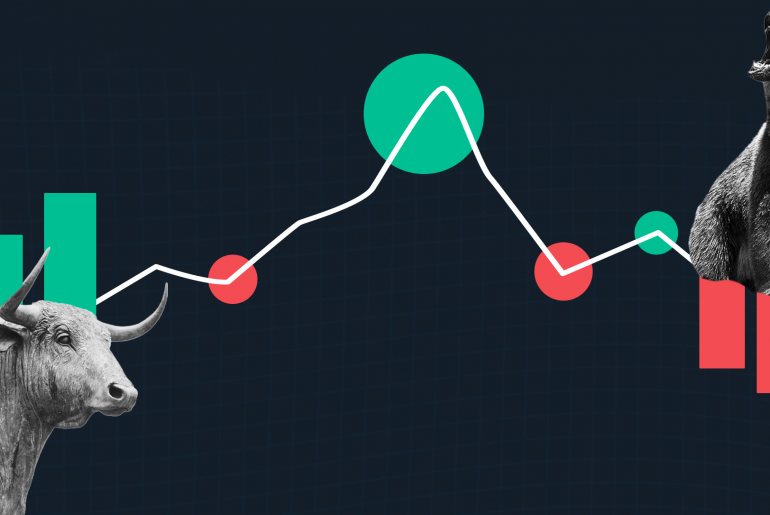Last Updated on May 24, 2022 by Anjali Chourasiya
Traders employ innumerable strategies to profit from the stock market. Many use combinations of technical analysis and other tools to plan a trade. Some investors use the price of the stock itself to formulate trade strategies to gain profits. Short selling is one such technique.
Short selling is an investment strategy adopted by an investor who believes the price of a stock is going to fall. In this strategy, they are basically selling a stock which they do not even own. Confused? Don’t be. Read further to understand how this happens and how traders benefit from short selling in the share market.
Table of Contents
What is short selling?
Short selling or shorting, as it is commonly known, is a trading strategy in which a trader bets on a future correction in the stock price. Essentially, the trader here is betting on the price of the stock to fall. Therefore, he first sells the stock at a specific price and then intends to buy it at a lower price to square off his position by making a profit. Naturally, through such trading, a trader can make money even in a falling market.
Selling short follows the old stock trading adage to “buy low – sell high”. However, unlike in a traditional stock trade where the “buy” transaction happens first, short selling puts the “sell” transaction first, opening a short position that the buy transaction closes out.
How does short selling work?
One may question how it is possible to sell a stock one does not own or how one can sell something before buying it. Clearly, short selling is done on borrowed stocks. Look at the below example:
Assume a trader Mr A is looking to short a stock XYZ that is currently trading at Rs. 100. Now, Mr A borrows, let’s say, 1 share from his broker and sells it immediately at Rs. 110. Mr A now owes one share to his broker. Assuming the share price has fallen to Rs. 80, Mr A here would buy 1 share of XYZ and return it to his broker. In this overall transaction, Mr A stands to make a profit of Rs. 30 (Rs. 110 – Rs. 80).
Note: SEBI allows only intraday short selling in the spot market. This implies that a trader making a short sell must return the borrowed shares before the trading day’s close by buying back an equivalent number of shares from the open market.
Short selling simply functions on market fluctuations. In the above example, imagine if instead of a price fall, the price booms! What do you think is going to happen? Assume the price rises to Rs. 130, Mr A would have to buy it and bear the losses. Since in the real world, traders trade 100s of units, you can imagine the losses they would be bearing in case the market betrays them!
A retail investor taking short positions does not largely affect the markets or share prices. But high net worth individuals and financial institutions play with big money. Their short positions can run into 100s of crores. A lot of market manipulation is said to be behind shorting. If a company becomes a target of attacked shorting, its share price could tumble down like a house of cards.
Why short sell?
Traders use short selling for two primary purposes:
- Speculation: When a trader believes that a stock is overvalued and a correction is expected, they shall adopt the short sell strategy to benefit from the fall in price. This carries great risk and is used by advanced traders.
- Hedging: Money/fund managers commonly use a short trade to reduce their risk exposure in long positions.
Benefits of short selling
- Short selling is a great way to improve market efficiencies and increase market liquidity. It helps in the correction of overvalued stock prices.
- This strategy enables investors to make substantial gains even when stock prices are falling.
- It enables investors to protect their portfolios by hedging.
- More profits can be made by the use of smaller capital as short selling enables leverage.
Risks of short selling
Traders undertaking a short trade are exposed to infinite risk. In a long trade, you are risking the amount you invest, however, in short, the risk is unlimited as there is no limit till which the stock price can rise, thus making the exposure infinite.
Short selling involves a delivery risk. If the trader cannot return the borrowed shares within the same day (it may happen if the stock has an unusually high demand like when it hits the upper circuit), then the broker buys the shares at a much higher price in the auction market. Investors have to pay a hefty penalty for defaulting.
Short Selling is extremely time-sensitive. If a trader shorts stocks long before their price drop, they might have to bear the costs associated with short selling for a prolonged period. Conversely, if a trader short stock a tad too late, then the chances that the stock has lived out most of the price fall is high.
Conclusion
Short selling is a perilous trading strategy used by seasoned traders to profit from the volatile markets. But it can be dangerous for a novice trader. As an investor, one should only short a stock if they understand the concept in-depth, have the risk-bearing capacity and can digest losses.
Before you go, we’ve got a special surprise for you! On account of Diwali 2021, we are gifting you a free Tickertape PRO upgrade! Just sign up on Tickertape and avail the offer.
Go on, claim your free account now!




